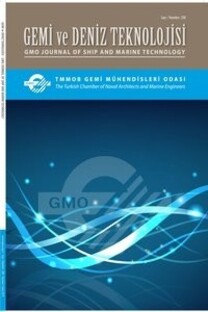Computation of Steering and Braking Forces of Tractor Type Escort Tugs
This paper presents two practical computational procedures to predict the steering and braking forces applied by tractor type escort tugs to large vessels, particularly oil tankers. The essential part of the escort performance prediction methodology is the computation of hydrodynamic forces generated by the tug’s hull and the appendages such as skeg. These forces can be converted into the steering and braking force components which define the escort performance of the tug. The hydrodynamic forces can be estimated by scaled model tests however this approach is not suitable for early design studies because of cost and time restrictions. The first methodology presented in this paper is based on semi-empirical methods, obtained from model test measurements and full-scale test results, and developed in order to be used at early design stages where limited design information is available. A computational technique based on Reynolds-Averaged-Navier-Stokes (RANS) equations is recommended for the later stages of design process in which more precise definition of hull and appendages geometries are available. This approach, which takes local flow characteristics into account, can be used for the optimisation of hull and appendages geometries. In this study, two different approaches are presented and used on a given escort tug.
Anahtar Kelimeler:
Escort Tug, Hydrodynamic Forces, RANS
___
- Allan R. G. (2000). “The Evolution of Escort Tug Technology: Fulfilling a Promise”, SNAME Transactions, Vol. 108.
- Allan R. G. ve Molyneux D. (2004). “Escort Tug Design Alternatives and a Comparison of their Hydrodynamic Performance”, SNAME Transactions, Vol. 112.
- Ankudinov V. (1985). “Ship Manoeuvring Simulation Model Including Regimes of Slow Speeds and Large Drift Angles”, Report for the First International Maritime Simulation Symposium, Munich, Germany.
- Bilici G., Aydın Ç., Ünal U. O. ve Sarıöz K. (2016). “Performance Prediction for Tractor Type Escort Tugs”, 2nd International Meeting on Recent Advances in Prediction Techniques for Safe Manoeuvring of Ships and Submarines, 17 – 18 November 2016, Istanbul, Turkey.
- Blazek J. (2001). “Computational Fluid Dynamics: Principles and Applications”, Elsevier, Oxford, UK.
- Dabbar J. M. ve Morgan J. M. (1996). “Tractor Tug: Conceptual Design to Implementation”, Marine Technology, Vol. 33, No 1, January. “Guidelines for Transiting the Turkish Straits”, Briefing Paper for OCIMF Member Companies, Oil Companies International Marine Forum (OCIMF), August 2007.
- Hensen H. (1997). “Tug use in Port – A Practical Guide”, The Nautical Institute.
- Hutchison B. L., Gray D. L., ve Jagannathan S. (1993). “New Insights into Voith Schneider Tractor Tug Capability”, Marine Technology, Vol 30, No 4, October.
- Jagannathan S., Gray D. L., Mathai T., ve de Jong J. (1995). “Tanker Escort: Requirements, Assessments, and Validation”, SNAME Transactions, Vol. 103.
- Patankar, S.V. ve Spalding, D.B. (1972). “A Calculation Procedure for Heat, Mass and Momentum Transfer in Three-Dimensional Parabolic Flows”, International Journal of Heat and Mass Transfer, 15, 1787-1806.
- “Safety of Navigation through the Bosporus Strait, Sea of Marmara and Dardanelles”, Report submitted by the Oil Companies International Marine Forum (OCIMF), IMO Marine Safety Committee (MSC), MSC 67/7/12, 1997.
- Shih, T-H., Liou, W.W., Shabbir, A., Yang, Z., Zhu, J. “A New k-ε Eddy Viscosity Model for High Reynolds Number Turbulent Flows”, Computers and Fluids, Vol 24, No 3, 227-238, March 1995.
- Sturmhöfel U. ve Bartels J-E. (1993). “Basic Requirements for Safe Escort Vessels – Theoretical Consideration and Model Measurements”, RINA International Conference on Escort Tugs, Design, Construction and Handling – The Way Ahead, London, England, 4 February.
- Tennekes H. ve Lumley J.L. (1972). “A First Course in Turbulence”, MIT Press, Cambridge, UK. Wilcox D.C. (2006). “Turbulence Modeling for CFD”, DCW Industries, California, USA.
- ISSN: 1300-1973
- Yayın Aralığı: Yılda 2 Sayı
- Başlangıç: 1955
- Yayıncı: TMMOB Gemi Mühendisleri Odası
